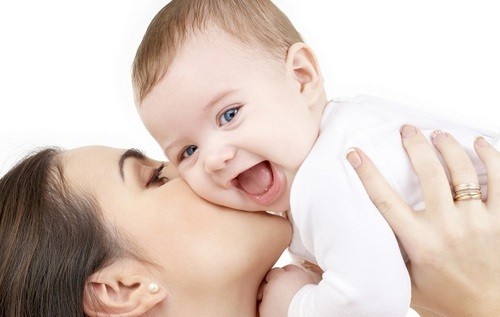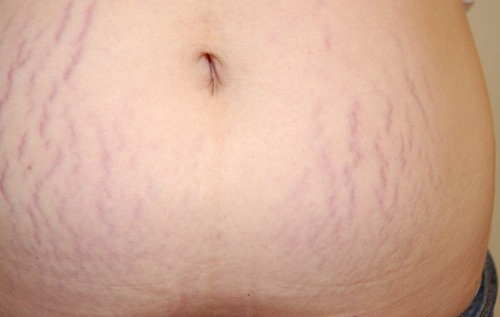After the birth of the baby for several weeks, every woman continues to have discharge from the genitals. These are lochia that will disturb the girl for several days and even weeks until the mucous membrane of the uterus after childbirth is completely restored.
Postpartum discharge is a normal and natural phenomenon, so you should not be afraid of this. If the health of the young mother is all right, then after a certain time they simply pass without a trace.
As you know, the entire birth process ends with the birth of the afterbirth. This is accompanied by abundant lochia. They are bloody and mucous, because from the attachment of the placenta on the surface of the uterus, damage remains.
Until the wound heals, wound contents with a faint odor will continue to flow from the vagina of the puerpera, gradually changing their color. Lochia lasts quite a while. And they are the most plentiful in the first month. How long this will continue depends on several factors. But, if initially immediately after birth the lochia from the genital tract is released in large quantities, then with time the blood impurities in them will be less and less.
Such discharge after childbirth consists of blood cells, plasma, mucus located in the cervical canal, and epithelial particles. As the wound gradually heals, the color and composition of the goofies begin to change. If immediately after childbirth in the first month they are usually bright scarlet and blood clots and mucus can be found in them, then after a while they become lighter. At the time when the girl is in the hospital, doctors monitor the character of her lochs, but at home, the young mother must do this on her own to determine whether the healing process is proceeding correctly. Their color and volume can be an alarming signal for a woman.
For example, purulent or green lochia that have an unpleasant odor should alert. If there are any concerns about this, it is best not to delay, but immediately seek the advice of a specialist.
First hours after childbirth
If everything went well, then the first 2-3 hours after the birth of the baby, the girl will be in the maternity ward. Since there is a risk of bleeding during this period, doctors will closely monitor the woman in labor. All this time, she will have abundant mucous spotting after childbirth with a barely perceptible smell, which may include blood clots. But at the same time, their total volume should not exceed 400 milliliters.
Otherwise, pathology is possible. A safe amount of lochia is calculated based on the body weight of the woman in labor. It makes up 0.5 percent of its weight. It is in order to prevent bleeding after childbirth on the lower abdomen of a woman, ice is laid, and the bladder is emptied using a catheter.
In the first hours after childbirth, doctors carefully monitor the condition of the young mother, as bleeding can occur for a variety of reasons. For example, after a difficult birth, during which the girl received many injuries. Therefore, while resting, a woman herself must control her condition and well-being in order to avoid dangerous consequences. If her condition is stable and there are no health hazards, then after 2 hours mom is already transferred to a regular ward.
First days after childbirth
In the first few days, a woman will have very abundant red lochia, in which blood clots and mucus can also be seen. Their amount is approximately 300 milliliters in 24 hours. In this case, a frigid and unpleasant odor can often be noticeable. During this period, a woman has to change the gasket every 1-2 hours.

Then they become less abundant and change their color. First, they turn from scarlet to dark red, and then brown discharge after birth completely appears. The character of the goofy these days must be assessed by the doctor, carefully examining the gasket, and also checking with the woman their exact amount per day. By the way, the volume of discharge can significantly increase at the moment when the specialist examines the girl.
First weeks after birth
If the recovery period after childbirth proceeds without complications, then the discharge lasts no more than eight weeks. In general, about a month. During this time, up to 1.5 liters of lochia is allocated. In the first week, discharge by sensation and appearance is similar to menstruation. But at the same time they are more plentiful and contain blood clots and mucus. Then every day their number decreases, and after a while the lochia become whitish-yellow or white. During this period, mainly yellow discharge after childbirth is characteristic. True, sometimes pink lochia can still appear. But they should by no means be purulent.
In the fourth week, when the first month after the birth will end, the blood mucous discharge becomes scarce and acquires a smearing character. And from about the sixth week, the lochia completely ceases completely, the discharge becomes the same and loses its color and smell, as in the period before pregnancy. Young mothers who breastfeed their baby notice that their lochia stops much faster. Since in this case there is an accelerated process of uterine contraction. But in women who have had a cesarean section, on the contrary, this process is greatly delayed.
The main thing is to carefully monitor your well-being and condition and, in case of any suspicion, seek the advice of a doctor. In order to accelerate the healing process of injuries and prevent excessive discharge, it is best to stay on your legs as little as possible in the first five to six days after giving birth and in no case to over-exert yourself and do not lift weights. In general, how much discharge goes after childbirth depends on the individual characteristics of the woman’s body and her condition.
Proper postpartum hygiene
So that in the postpartum period there are no infectious complications, a young mother needs to carefully monitor her hygiene. This will help to fight with an unpleasant odor. Especially the first six weeks, when lochia continues to stand out. It is necessary that the correct timely outflow of secretions from the uterine cavity occurs. Otherwise, pathogenic microflora can begin to develop in them, which in most cases leads to inflammation.

Until the moment when the lochia is completely over, the girl must definitely use special postpartum pads. At the same time, it is important to change them very often – at least every three hours. And so the whole first month. Otherwise, pathogens can begin to multiply on them.
But it is better for a young mother to refuse aromatic pads that have any chemical smell in the first postpartum weeks, as they increase the risk of allergies. You can not use tampons, because they can impede the exit of the goof from the body. In this case, mucous postpartum secretions will remain inside. If the girl is lying, it is best to simply lay a diaper on the surface. Often, gynecologists advise on the whole to refuse to buy ready-made white pads, but it is better to sew them for yourself from washed and ironed soft cotton. It is believed that such reusable home-made pads that can be washed breathe well and reduce the risk of infection. And, besides, using them to a young mother is much more pleasant and comfortable. And in the first month in this way it will turn out to save significantly on gaskets.
The girl should wash in the first weeks not only after changing the gasket, but also after each trip to the toilet. It is not recommended to take a bath during this period, it is better to use a warm shower. And how many times a day to go to the shower, each girl decides for herself. Water should be washed in the area around the vagina and labia, but in no case inside. By the way, warm water significantly reduces pain from injuries healing after childbirth. Therefore, it is possible to wash the perineum for the first month right during urination, since urine can irritate wounds and cause unpleasant nibbling pain.
In no case should you do vaginal douching. This is especially true for special vaginal showers. The genitals can be washed only outside for several days after the birth process. This is necessary to wash off the discharge after childbirth, but not to damage the existing wounds.
When is a doctor needed?
Every young mother needs to know in which cases the discharge after childbirth indicates that she urgently needs to consult a specialist.
- For example, if pus appeared in the secretions, they have a very sharp and unpleasant odor, they have become green, yellow, yellow-green or greenish. All this is a serious reason to urgently go to your gynecologist. After all, most likely, these signs indicate the occurrence of an infectious process in the uterus. In addition to color and odor, postpartum endometritis is accompanied by the appearance of high temperature and pain in the abdomen. After a while, a woman will begin to feel general weakness and discomfort.
- Another cause for concern – if the discharge after childbirth first naturally decreased, as it should be, and then their number increased again. Or in the event that the blood lochia does not end for a long time. Their duration should be 3-4 days. This happens if the latter has lingered in the uterine cavity, which prevents its normal natural contraction.
- Cheesy white discharge may also appear. These are signs of developing thrush. Also, this unpleasant disease is characterized by redness of the vagina and unpleasant itching. Often, thrush appears if a woman uses any antibiotics.
- The case should be alerted if the discharge after childbirth suddenly stopped abruptly. Lochia must have a certain duration. Before six weeks, their abrupt cessation indicates the development of an infection and some other possible troubles. In this case, only an experienced doctor will help to deal with the situation.
- If the lochia is so plentiful that a woman lacks even a few pads for one hour, then in this case you can not go to the doctor yourself, it is better to call an ambulance at home. After all, such active dehydration can completely deprive a young mother of strength. In this case, it is necessary to call the hospital as soon as possible and not drag out for a long time, otherwise after a while the girl will only get worse.
To avoid all sorts of dangerous consequences, you need to carefully monitor your well-being, the nature of the goofs in the period after the birth of the baby and how long they last. Especially the first month. If something worried the young mother, it is better to immediately consult a doctor.



